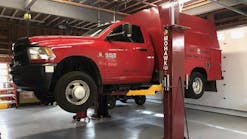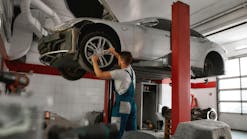Guest Blog: The danger of diesel ultrafine particles
Over the years, modern diesel engines have become cleaner. Or in other words: they have become less pollutable and emit less hazardous fumes. Diesel engines even emit less carbon dioxide than gasoline engines and many diesel engine manufacturers claim that most of the harm of diesel exhaust has been reduced.
Earlier this year Bosch claimed an unprecedented reduction of NOx emissions with new technologies, stating that “internal combustion engines equipped with artificial intelligence have almost zero impact on air quality.”
From an environmental point of view, breakthroughs such as these sound promising. Reducing harmful exhaust gases and particulate matter is always a good idea. However, it is still good practice to remember that diesel exhaust is not – and never will be – completely clean and harmless. Specific occupations, such as fire personnel, mechanics, operators, and others, face a greater risk of health problems due to prolonged diesel engine exhaust exposure.
The need for exhaust extraction systems
Because of these new technologies in diesel engines and exhaust filter systems, and probably because of the claims car manufacturers make, many people might think that the use of exhaust extraction systems is no longer necessary. This is a dangerous development. Although levels of carbon dioxide and nitrogen oxides emissions are significantly lower than those of engines without diesel particulate filters (DPF), there are other substances that pose a risk.
A study published in Particle and Fibre Toxicology shows that there is still a great concern about the emissions of ultrafine combustion generated particles smaller than 10nm with insignificant mass. These nanoparticles are not easily measured at the exhausts and in the atmosphere. Furthermore, their biological activity is uncertain, but that does not mean that we can overlook them.
Once inhaled, nanoparticles can settle in the airways. Particles smaller than 100nm reach the bloodstream and can be found in organs other than the lungs. In addition to the adverse effects in the respiratory and cardiovascular system, they potentially affect other organs. Imagine the health effect of even smaller sub 10nm nanoparticles. It might be more severe than what may be expected from their very low mass concentrations.
A recent study on the efficiency of particle filters, concludes that sub-10 nm particles are not sufficiently removed by particle filters.
And how long do filters work?
Even if you ignore the issues with sub 10nm particles and truly believe the car manufacturers’ claims that new diesel engines with particle filters are extremely clean, bear in mind that filters are only tested on new cars in a controlled environment. In recent news, Volvo issued a press statement after they detected that “an emissions control component used in certain markets is degrading more quickly than expected.” This problem concerns buses and trucks, mainly sold in North America and Europe. The affected engines met emissions limits for nitrogen oxides at the time of delivery, but may currently exceed these limits. At the time of writing, a full analysis of the issue had not yet been completed, but it is clear that it is not sufficient to rely on particle filters alone.
Conclusion
It is too early to say for diesel engine manufacturers that new combustion and exhaust technologies have reduced most of the harm of diesel exhaust. While it may be true for carbon dioxide and nitrogen oxide emissions, smaller and potentially dangerous particles are not filtered which means that working on vehicles with running diesel engines in a closed environment still involves a great health risk.
For a safe and healthy working environment, it is strongly recommended to not only rely on car manufacturers’ technologies and claims, but always use vehicle exhaust extraction systems.
Information provided by Plymovent


